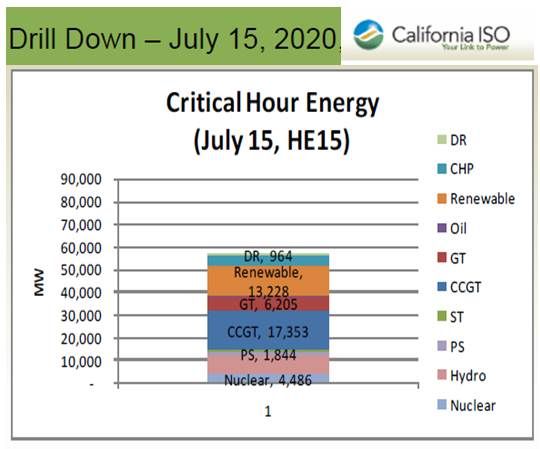Every day, California’s grid operator manages an energy mix Rubik’s Cube of about 15 percent nuclear, 28 percent imported sources like coal and hydro, 23 percent natural gas, 20 percent large hydro and almost 14 percent renewables (wind, geothermal, small hydro, biomass and solar).
To meet the state’s goal of 33 percent renewables by 2020, “the overall renewable resources would have to increase from a historical total capacity level under 6,000 megawatts to more than 25,000 megawatts,” according to California Independent System Operator Corporation (ISO) Director of Power System Technology Development Khaled Abdul-Rahman.
To handle the state’s present portfolio of renewable generation and to prepare for managing 33 percent renewables, the ISO’s state-of-the-art operations center set up a desk dedicated entirely to renewables. One key focus of the renewables desk is to provide accurate forecasts for variable resources like sun and wind.
“Forecasting has always been a very critical function in power system operations,” Abdul-Rahman said. “But that has been mostly tied with forecasting of load. There was little generating uncertainty because generating units could be controlled and turned on and off.” There have always been some disruptions, such as units tripping off or transmission lines going down. The potential for disruptions is part of ISO planning and operating reserves are kept available.
Renewables add variability and uncertainty to the generation side of the load-balance equation because they are subject to the weather. “To reliably manage the grid operation,” Abdul-Rahman said, “the system operator needs to know these forecasts 24 hours in advance, but current technology can only accurately predict an hour to a few hours ahead.”

Because of variability, uncertainty and forecasting limitations, a system operator maintains “ramping capability,” which provides “system flexibility,” Abdul-Rahman said. If the wind suddenly stops blowing, the system operator needs to cover that by ramping up some kind of fast responding supply or invoking demand response measures to reduce the load. And sometimes “it’s the other way around,” Abdul-Rahman added: “The wind suddenly blows.” If supply exceeds demand, the system operator must back down the on-line generation or increase demand.
“California has seen sudden changes over a 10-minute period as large as 800 megawatts and 1,200 megawatts of wind generation dropping,” according to Abdul-Rahman. “These drops in supply require greater system flexibility and ramp capability” to sustain grid reliability.
“We continue to work on enhancing our forecasting tools,” Abdul-Rahman said. “Most of the time, our tools can predict these changes.” The next challenge, he explained, is deciding “how to prepare for them.”
“California ISO,” Abdul-Rahman said, “is working to build more intelligence into its market applications to prepare for the variability and uncertainty associated with load and generation.” A new software tool called Flexible-Ramp, he explained, is designed “to ensure sufficient flexibility is available” to meet imbalances.
The ISO plans to introduce Flexible-Ramp in two phases. In the first phase, it will be part of “the hour-ahead and real-time 15-minute procurement processes” to meet system ramping shortages.
As a second phase, California ISO wants to offer Flexible-Ramp “as a new five-minute product to market participants.” It will provide them with the capability to offer bid-in prices like they now can for other commodities (energy, spinning reserves, non-spinning reserves, and regulation) in the California ISO market.

The ramping requirement will be determined by the ISO, Abdul-Rahman said. It will then invite the market “to bid in.” He added, “We will procure the lowest-cost resource.”
Introducing a new market design “is a little complicated,” Abdul-Rahman said, “but a very logical sort of problem.”
In an attempt to remove barriers to more participation in the regulation market, the ISO plans to add the capability to allow energy storage devices to bid in for regulation services in 2012, Abdul-Rahman said, because energy storage “can respond very fast” to either consume or supply energy.
The California ISO also has plans to expand the role of Demand Response by allowing providers to “bid in different kinds of ancillary services” beyond those already used in the ISO’s market.
“The ISO is also implementing a Dynamic Transfer project that will integrate the dynamic transfer (dynamic schedules and pseudo-ties) into the ISO’s market software,” Abdul-Rahman said. The goal, he explained, is to expand the opportunities for resources, particularly intermittent resources, to participate in electricity markets throughout the Western Interconnection.
“The key driver is that we would like to comply with the greenhouse gas emissions reduction rules,” Abdul-Rahman said. “We would like to make sure there are no barriers to integrating more renewable resources into our grid.”
Barriers? What barriers? Just solve the Rubik’s Cube and let the wind and sun flow through.
***
Next in the series: the questions of transmission, reliability and cost.



